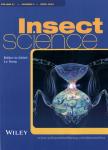Detection of ryanodine receptor target-site mutations in diamide insecticide-resistant Spodoptera frugiperda in China
在 diamide 的 ryanodine 受体目标地点变化的察觉在中国的杀虫药剂抵抗的 Spodoptera frugiperda作者机构:College of Plant ProtectionChina Agricultural UniversityBeijingChina
出 版 物:《Insect Science》 (昆虫科学(英文版))
年 卷 期:2021年第28卷第3期
页 面:639-648页
核心收录:
学科分类:09[农学] 0904[农学-植物保护] 090402[农学-农业昆虫与害虫防治]
基 金:the National Key Research and Development Program of China(2019YFD0300103) the National Natural Science Foundation of China(31601655)
主 题:diamide insecticides resistance resistance risk Spodoptera frugiperda
摘 要:Spodoptera frugiperda(Lepidoptera:Noctuidae)is a widely distributed pest of *** it invaded China in 2018,it has caused serious damage to local corn ***,an anthranilic diamide insecticide,has been widely used to control lepidopteran *** is a new allosteric modulator insecticide devel-oped based on chlorantraniliprole,so it has a similar mechanism and insecticidal *** this study,we investigated resistance levels to chlorantraniliprole and tetrachloropyramid in *** from 13 populations in *** the populations tested,the relative highest resistance to chlorantraniliprole occurred in the Guangzhou population,and the most susceptible to chlorantraniliprole was found in the Wuhan *** lethal dosage LD50 value of the Guangzhou population against chlorantraniliprole was 27.8-fold higher than that of the Wuhan *** differences were observed among 5.frugiperda populations in terms of sensitivity to *** mutations at the 14734 site of the ryanodine receptor(RyR)were found,while no mutations were found in the G4891 *** mutations were detected in only two of the 786 individuals analyzed one from the Qinzhou population and other from the Anshun population(frequency below 2%in both cases).There were no significant differences in the expression levels of RyR between Guangzhou and Wuhan *** summary,our results indicate that:(i)*** has low resistance levels to diamide insecticides in China;and(ii)the differences in relative resistance among the 13 populations analyzed are not caused by the mutations in RyR or the expression of RyR.



